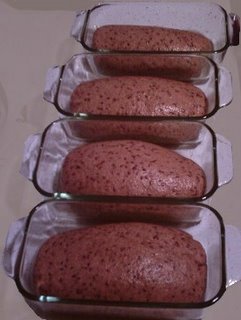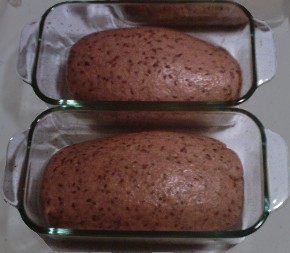Eventually, it happens.
You go straight home without stopping to pick up the makings for supper. You collapse at the end of the week, rheumy eyed and shuffling, and absolutely cannot face the five o’clock crowd at your neighborhood Safeway, Whole Foods, Tesco or Raley’s. When your resistance is lowest, and a couch-coma with a hot drink seems to be a distant mirage, it will strike: that loving, hopeful helpfulness. That dewey-eyed affection. That off-hand offer.
“Oh, I’ll go to the store, hon.”
Oh, it sounds innocent enough. It’s all very loving and sweet. But then he goes to the store. He’s gone for more than an hour. He comes home laden with bags, nine-tenths of what you didn’t  need. He protests, “Well, you let me go by myself,” which puts the blame all back on you. And this time, he’s really done it. This time, you’ve ended up with… Vegemite.
need. He protests, “Well, you let me go by myself,” which puts the blame all back on you. And this time, he’s really done it. This time, you’ve ended up with… Vegemite.
(Cue danger music.)
Now, it’s a … food. Of sorts. Wikifolk say it’s made from leftover brewers’ yeast extract, a by-product of beer. In October of 2006, there was some huge internet flap about the U.S. banning it, but no, it’s still stocked quite freely on my grocery store shelf — someone just started that rumor about Customs checking people for fun (The U.S. Customs and Border Protection states on its website that “there is no known prohibition on the importation of Vegemite” and “there is no official policy within CBP targeting Vegemite for interception.”). But now that it’s staring me in the face — something that’s always been available, but never purchased — I don’t really know… yet… what to do with it.
Granted, we routinely use smoked nutritional yeast (which appears to be a by-product of paper production — who knew we ate recycled food?) as a flavoring; (it works well with tofu), and we even grew Shitakes, once, in the kitchen, for fun, so it’s not like we don’t know from fungi. I’m just… okay, it’s in this thick brown jar, and it’s oily and deeply sticky and disturbing. I’m not sure where to take it from here. All the Australians I’ve known like it on… toast. Um, maybe not for me. Soup bases, I can see, but vegemite on toast seems to be the equivalent of eating bouillon on toast, from the look of it. Sodium lovers might enjoy, but I think I need a few more options.
After roaming around fruitlessly on the web, I finally made a foray onto the vegemite recipe site and came up with some options.
![]()
Roast Pumpkin And Leek Risotto
Serves: 4
Preparation: 10-15 mins
Cooking: 40 mins
500g butternut pumpkin (by which I assume they mean squash?), cut into cubes
olive oil spray
1 teaspoon butter
1 leek, sliced and washed
125g rashers bacon, rind removed and chopped
(Who knew bacon had rinds!? I’d better improvise…)
1 clove garlic, crushed
11/4 cups short grain rice
1 tablespoon VEGEMITE
1 litre (4 cups) boiling water pepper, to taste
1/4 cup finely chopped parsley
40g butter (Haven’t we already had butter?!)
shredded Parmesan cheese
SPRAY pumpkin with olive oil spray and bake at 200ºC for 25-30 minutes or until golden. Heat butter in a pan and cook the sliced leek, bacon and garlic for 2-3 minutes or until bacon is browned.
ADD rice and stir for 2 minutes or until coated in butter mixture. Stir in combined Vegemite and water. Bring to boil, reduce heat and simmer uncovered for 10-15 minutes, stirring occasionally until water is absorbed and rice is cooked.
REMOVE from heat and stir in pepper, parsley, and butter. Spoon into serving bowls and top with shredded Parmesan. Serve immediately.
I came up with a few more options — they run the gamut from just the bread-and-butter on toast plus Vegemite, to the stripes of Vegemite and melty cheese to Vegemite … milkshakes. Which sound to me like a horrible, terrible mistake. I still can’t force myself to taste the stuff on the edge of a spoon — it just smells too strong for that — but I’m off to the kitchen, and I’ll let you know how it goes.

 with his penchant for flinging fleshy huge mushrooms in EVERYTHING, or mi mama, with that unholy Creole trinity of green bell peppers, onions and celery — and I loathe bitter green bells and celery cooked. Shudder. Those were the soups of my childhood — limp, overcooked vegetables in a watery broth; or horrible broccoli soups with garish flavors all competing; soups layered with some floaty unidentifiable green stuff with a green bitterness undergirding it all. Long ago I determined that these are not the soups I will spend my adult life eating.
with his penchant for flinging fleshy huge mushrooms in EVERYTHING, or mi mama, with that unholy Creole trinity of green bell peppers, onions and celery — and I loathe bitter green bells and celery cooked. Shudder. Those were the soups of my childhood — limp, overcooked vegetables in a watery broth; or horrible broccoli soups with garish flavors all competing; soups layered with some floaty unidentifiable green stuff with a green bitterness undergirding it all. Long ago I determined that these are not the soups I will spend my adult life eating.
 decided, since I have an abundance of carrots and leeks from the farm box this week, to see if they’d make a decent soup. I tasted a piece of the top, and determined that it was a flavor close enough to celery to work well.
decided, since I have an abundance of carrots and leeks from the farm box this week, to see if they’d make a decent soup. I tasted a piece of the top, and determined that it was a flavor close enough to celery to work well. popping things in the oven and topping them with whipped cream. A little research informs me that in reality, this dish is called “Indian” pudding because the early settlers referred to the main ingredient as “Indian meal” – the meal used by the First Nation peoples. Generally, John and Mary Puritan weren’t all that creative, so any recipe using Indian meal as the main ingredient was called Indian… . Over time, the plant became known as corn, and the meal made from it as corn meal.
popping things in the oven and topping them with whipped cream. A little research informs me that in reality, this dish is called “Indian” pudding because the early settlers referred to the main ingredient as “Indian meal” – the meal used by the First Nation peoples. Generally, John and Mary Puritan weren’t all that creative, so any recipe using Indian meal as the main ingredient was called Indian… . Over time, the plant became known as corn, and the meal made from it as corn meal. hour.
hour.






 It’s not like all of my whinging is going to do me any good. I was told rather succinctly that if I could come up with something to take the place of the dreaded and derided fruits, I should speak right up and suggest it. But actually: you can’t grow bread. And really? That’s all I want.
It’s not like all of my whinging is going to do me any good. I was told rather succinctly that if I could come up with something to take the place of the dreaded and derided fruits, I should speak right up and suggest it. But actually: you can’t grow bread. And really? That’s all I want.